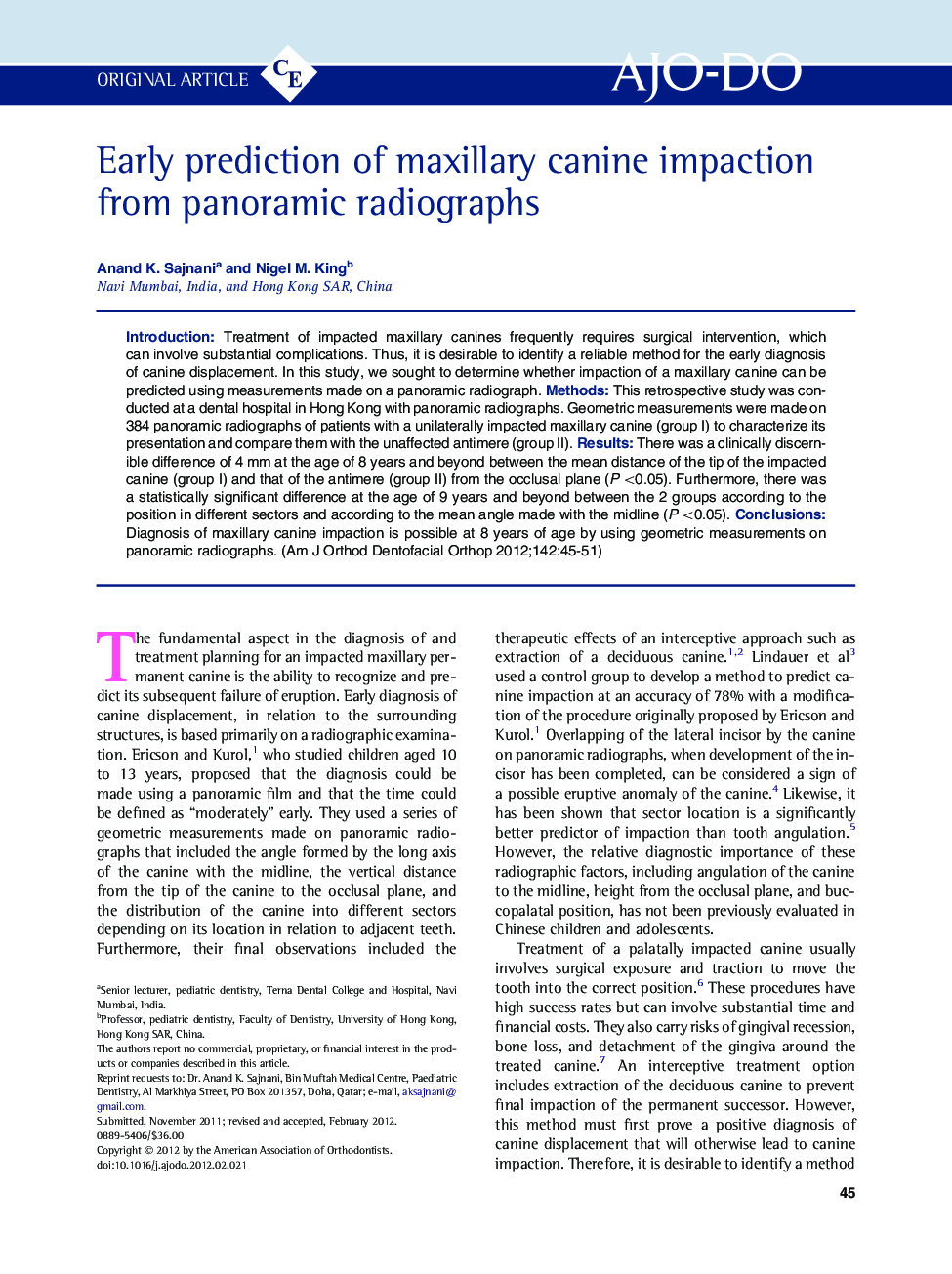| Article ID | Journal | Published Year | Pages | File Type |
|---|---|---|---|---|
| 3117206 | American Journal of Orthodontics and Dentofacial Orthopedics | 2012 | 7 Pages |
IntroductionTreatment of impacted maxillary canines frequently requires surgical intervention, which can involve substantial complications. Thus, it is desirable to identify a reliable method for the early diagnosis of canine displacement. In this study, we sought to determine whether impaction of a maxillary canine can be predicted using measurements made on a panoramic radiograph.MethodsThis retrospective study was conducted at a dental hospital in Hong Kong with panoramic radiographs. Geometric measurements were made on 384 panoramic radiographs of patients with a unilaterally impacted maxillary canine (group I) to characterize its presentation and compare them with the unaffected antimere (group II).ResultsThere was a clinically discernible difference of 4 mm at the age of 8 years and beyond between the mean distance of the tip of the impacted canine (group I) and that of the antimere (group II) from the occlusal plane (P <0.05). Furthermore, there was a statistically significant difference at the age of 9 years and beyond between the 2 groups according to the position in different sectors and according to the mean angle made with the midline (P <0.05).ConclusionsDiagnosis of maxillary canine impaction is possible at 8 years of age by using geometric measurements on panoramic radiographs.
